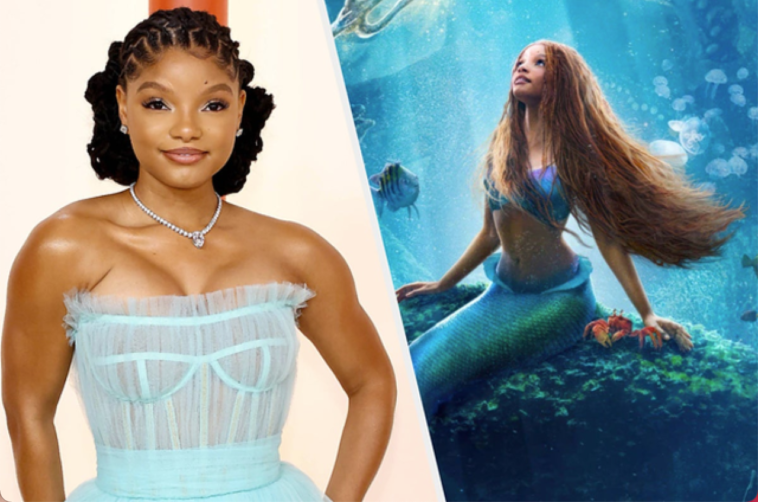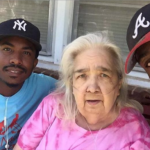When Halle Bailey was announced as the lead in Disney’s live-action adaptation of The Little Mermaid, the news was met with both excitement and criticism. Some praised her casting as a bold move towards diversity and representation, while others expressed disappointment that the so called “traditional” image of Ariel, a red-haired, fair-skinned mermaid, would be altered.

The attachment that many people have to the fictitious Ariel is a mixture of fascination and delusion. It is important to note that the red-haired, fair-skinned Ariel that so many have been accustomed to for nearly 34 years is Disney Animation Studios interpretation of how they wanted to adapt and present the story of The Little Mermaid. The goal was to make an independent princess with a love story (a departure from previous princess representation in animated classics like Snow White and Cinderella), and Ariel’s iconic red hair is a representation of her independent spirit and fiery nature. The actual tale, which was written by Danish author Hans Christian Andersen and first published in 1837, would probably depress and surprise the modern movie audience. The title character has no name and is only mentioned as “the little mermaid”, the prince doesn’t fall in love or marry her rather he marries someone else, and she dies of a broken heart because she was unsuccessful in getting the prince to marry her. Did we also mention that Ursula the sea witch also has no name in the book, and isn’t a villain but more of apothecarium support to assist the little mermaid in becoming human so she can woo the prince to stay human. The differences between the book, the animated film, and the live action film are so great it is truly like the audience is getting three different stories just within a similar vein. Even with this open literary knowledge this hasn’t stopped white conservative groups like “Christians Against The Little Mermaid (Boycott Halle Bailey)” from forming Facebook groups and petitions accusing Disney of white erasure with the casting of Bailey. When the teaser trailer for the live action film dropped in September 2022 the CATLM’s Facebook group membership had reached nearly ten thousand members.
Now, as the film has reached a current global box office total of $413 million dollars( as of publication of this article), it’s clear that the selection of Bailey for the role was a wise decision. The 22-year-old actress and singer has broken stereotypes and shattered glass ceilings with her captivating performance. Co-star Melissa McCarthy, who plays Ursula, has gotten emotional in many press interviews discussing Bailey’s stirring vocal performance and graceful spirit. During the Los Angeles premiere of the film actress Jodi Benson, who has been the voice actor for Ariel since 1989 and also makes a cameo in the live action film, spoke fondly of Bailey and stated, “She’s brilliant. I did get to meet her a few times and chat with her and just tell her how proud I was of her, and I love that she has a purity of heart and a pure spirit, and you can see that vulnerability and that childlike bravery and courage coming through, and it’s beautiful.”

Bailey brings a fresh perspective to Ariel, whose story has always been associated with classic Eurocentric femininity and beauty standards. Her portrayal of the character is raw, vulnerable, and authentic, showing us that women can be powerful and strong while embracing their flaws with the beauty and intelligence each woman uniquely carries. While Bailey kept the famous Disney princess’ red hair, she also kept her own iconic dreadlocks. By doing so this continues to open the door for normalizing Black hair representation on the big screen and in major motion pictures.
This isn’t the first time that Bailey has defied expectations. As a member of the Grammy-nominated duo Chloe x Halle, she has already made her mark in the music industry. With The Little Mermaid, Bailey is reinforcing her position as a rising star in the entertainment world. And her meteoric rise in film will undoubtedly continue as she plays the younger “Nettie” in the movie adaption of the Tony Award winning musical “The Color Purple”, set to release in theaters later this year on Christmas day.
As she takes on this iconic role, Bailey continues to prove that representation and inclusion are crucial in Hollywood. The casting of a black actress as Ariel is a monumental step towards breaking down racial barriers in the film industry. It is a pivotal moment for young girls of color, who can continue to see themselves in a Disney princess and believe that they too can achieve greatness and make a positive impact on the world. Bailey’s impact was especially felt during a highly viral video of a little black girl hugging Bailey and refusing to let her go when she spotted the actress in Disney World while Bailey was doing promotional work for the film. The sweet and emotional exchange displayed the importance of Bailey’s work and how far just her image as Ariel alone is reaching little Black girls. This sentiment was continued when rapper Offset and his daughters, Kalea and Kulture attended the Los Angeles film premiere. The little ladies were dressed in the finest princess inspired ballgowns and even donned red hair reminiscent to Bailey’s hair in the film.

Halle Bailey’s success in The Little Mermaid is not just a moment in time. It is a significant milestone in Hollywood’s journey towards a more inclusive and diverse future. Bailey’s performance is sure to inspire a new generation of young actors and actresses who dare to dream big and challenge societal norms. The Little Mermaid will undoubtedly continue to be a hit, and Bailey’s triumphant performance will be remembered for years to come.



